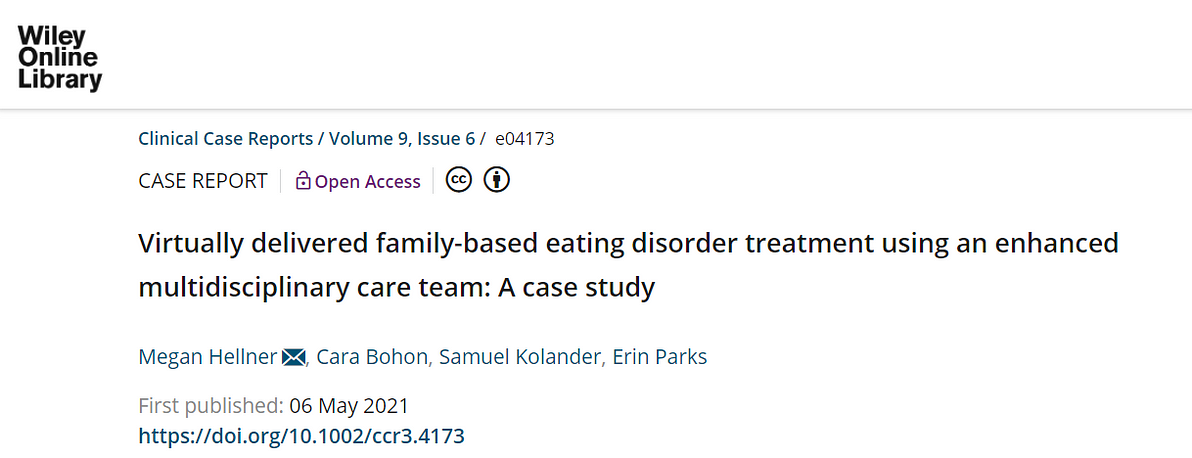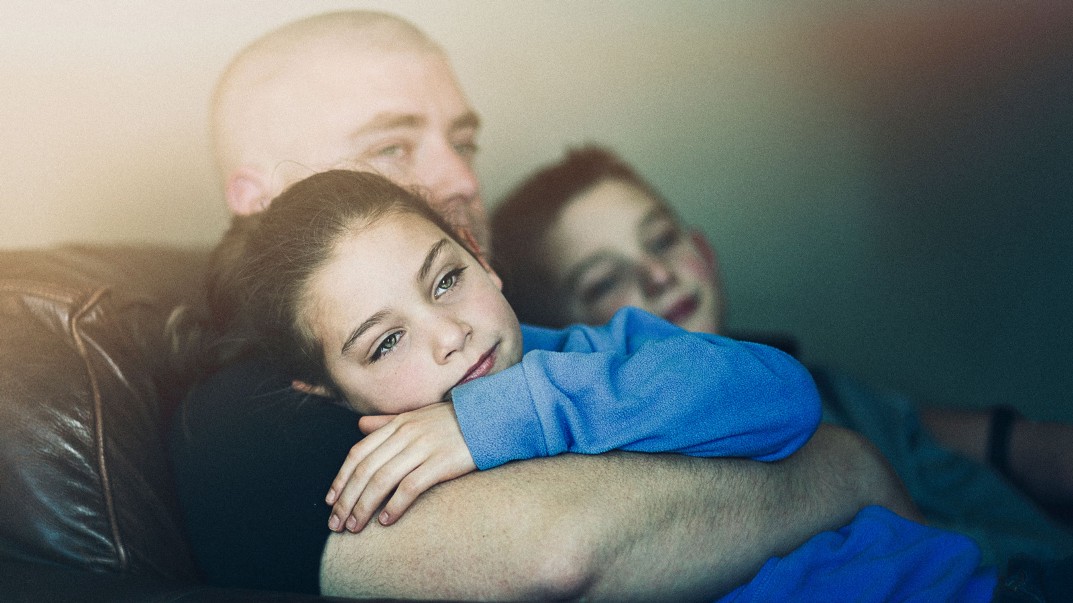Equip’s virtual model provides a dedicated five-person care team for every patient …
— a peer mentor, a family mentor, a medical physician, a therapist and a dietitian — who all assist the family in structuring the home for pro-health behaviors.
CVS Health
February 25, 2022
DISCLAIMER FROM THE EDITOR OF THE BLOG:
This is a republication only of the post by CVS Health, to provide insights to other players, particularly in Brazil. I receive no payment from CVS for republishing this.
WOONSOCKET, R.I. and SAN DIEGO, CA — Aetna®, a CVS Health® company (NYSE: CVS), and Equip, LLC (“Equip”), today announced a new relationship to provide Aetna commercial members with in-network access to Equip’s evidence-based eating disorder treatment program.
The program is available in California, New Jersey, New York, Oregon, Texas and Washington, and the companies are working together to consider expansion to additional states in 2023.
Through this agreement, the companies are tackling the multifaced impacts of eating disorders, for members and their families and caregivers. The COVID-19 pandemic intensified eating disorders, with the number of individuals who were hospitalized for eating disorders doubling in 2020.
“The need for access to evidence-based eating disorder treatment has never been greater,” said Cara McNulty, DPA, President, Behavioral Health and Mental Wellbeing, Aetna. “It is essential that we provide our members with personalized treatments that also account for the well-being of the whole family.”
Jessica Conley, Vice President, Aetna Mental Wellbeing Network, added, “Our collaboration with Equip seeks to address the gap in effective treatment options for members with an eating disorder through a high-impact and innovative service option delivered in a convenient and increasingly desired modality.”
Equip is built on Family-Based Treatment (FBT) — the gold-standard for evidence-based eating disorders care.
Equip’s virtual model provides a dedicated five-person care team for every patient — a peer mentor, a family mentor, a medical physician, a therapist and a dietitian — who all assist the family in structuring the home for pro-health behaviors.
Equip’s virtual model provides a dedicated five-person care team for every patient
— a peer mentor, a family mentor, a medical physician, a therapist and a dietitian — who all assist the family in structuring the home for pro-health behaviors.
“We started Equip with a vision to bring evidence-based care to every person in the United States who has an eating disorder,” said Kristina Saffran, co-founder and CEO of Equip. “Our combination of lived and clinical expertise provides patients with the care they need, and our partnership with Aetna will allow us to reach even more people and make recovery possible.”
In its collaboration with Aetna, Equip treats children, adolescents, and young adults ages 6–24 for a range of eating disorders.
About CVS Health
CVS Health is the leading health solutions company, delivering care like no one else can. We reach more people and improve the health of communities across America through our local presence, digital channels and over 300,000 dedicated colleagues — including more than 40,000 physicians, pharmacists, nurses, and nurse practitioners. Wherever and whenever people need us, we help them with their health — whether that’s managing chronic diseases, staying compliant with their medications, or accessing affordable health and wellness services in the most convenient ways. We help people navigate the health care system — and their personal health care — by improving access, lowering costs and being a trusted partner for every meaningful moment of health. And we do it all with heart, each and every day. Learn more at www.cvshealth.com.
About Aetna
Aetna, a CVS Health business, serves an estimated 34 million people with information and resources to help them make better informed decisions about their health care. Aetna offers a broad range of traditional, voluntary and consumer-directed health insurance products and related services, including medical, pharmacy, dental and behavioral health plans, and medical management capabilities, Medicaid health care management services, workers’ compensation administrative services and health information technology products and services. Aetna’s customers include employer groups, individuals, college students, part-time and hourly workers, health plans, health care providers, governmental units, government-sponsored plans, labor groups and expatriates. For more information, visit www.aetna.com and explore how Aetna is helping to build a healthier world.
About Equip
Equip is the leading provider of virtual, evidence-based eating disorder treatment in the U.S. Founded in 2019, Equip is built upon a combination of clinical expertise and lived experience to transform eating disorder care and make it accessible to all patients and families.
Built on the Family-Based Treatment (FBT) model, Equip uses a five-person dedicated care team — including a therapist, dietitian, physician, and peer & family mentor — to support patients in their recovery journey. The company operates in most states and is partnered with nearly every major health insurance plan. For more information, visit equip.health.
Originally published at https://www.cvshealth.com on February 25, 2022.
ABOUT EQUIP
Originally published at https://equip.health

About Equip’s Family-Based Treatment Model
Research Shows Equip’s Family-Based Treatment Model Works — Here’s Why
When it comes to eating disorder treatment, the reality is not all therapeutic approaches are created equal.
In fact, the type of therapy at the center of the Equip model — Family-Based Treatment (FBT) — is the only well-established treatment for adolescent eating disorders.
While methods like cognitive behavioral therapy (CBT), which is built on skills like thought retraining, and dialectical behavioral therapy (DBT), which involves self-soothing and mindfulness techniques play important roles in the array of treatment options, FBT has proven time and time again to be the most effective method for adolescents — so why isn’t every child and teen with an eating disorder getting it?
That’s the question Equip team members Megan Hellner, Cara Bohon, Samuel Kolander, and Erin Parks set out to answer in their new paper, “Virtually delivered family-based eating disorder treatment using an enhanced multidisciplinary care team: A case study,” published earlier this month.
The team chronicled the outcomes of two patients treated virtually through a modified four-week version of Equip’s model. Not only did both patients experience significant improvement in weight and clinical assessment scores, but both said they would “definitely recommend” the treatment to a friend or family member.
If FBT works, why isn’t everyone getting it?
So why isn’t FBT, the gold-standard treatment for eating disorders in adolescents, more common? According to the researchers, there are a few major obstacles — both on the provider side and the patient side.
For one thing, a surprisingly small number of eating disorder “experts” are actually trained in delivering FBT or any evidence-based treatments, for that matter. According to the report, the majority (57%) of psychotherapy providers receive no clinical training or supervision on eating disorders.
“There is a tension in the field between evidence-based treatment and real-world experience,” says one of the study’s authors, Cara Bohon, PhD, Equip’s VP of Clinical Programs. “Academically-trained clinicians and clinician-scientists tend to favor pure evidence-based protocols that they can have confidence in based on controlled trials. Others who see the limitations in both the data from those trials and the experience of their patients or themselves tend to push back on the pressure to follow protocols that don’t feel flexible. Further, even the best evidence-based treatments we have — FBT at the moment — are still only successful less than 50% of the time.”
But looking at treatment as an “either/or” situation is a paradigm experts say only ends up failing patients and impedes growth in the research field. “Sticking purely with the protocols can limit us from innovation, but straying too far from the research risks ending up with worse outcomes,” Bohon says. “I hope that this work pushes people on both sides of this research-practice divide to come together and see how we can use the research evidence and enhance it with lived experience to meet patients and families where they are, while not falling into a pattern of providing treatment that feels good, but doesn’t work.”
FBT as it exists in the traditional clinical setting can also be challenging from a patient perspective, which may make it a less appealing option for those who manage to have access to it.
“Many people quit FBT (if they are able to find it in the first place) when they realize how much work it is,” Bohon says. “It can feel overwhelming, and as the eating disorder is challenged by the family and treatment team, distress often rises initially.
This is normal and gets better by sticking with treatment, but that is hard for families and patients to believe when they are in the thick of it in the first few weeks.”
How can Equip help FBT evolve?
Experts are advocating for FBT because it has the potential to be improved upon through platforms like Equip, which can deliver multidisciplinary care virtually, eliminating many of the existing obstacles on all sides of care.
“This case study highlights the potential for mentorship to support families through those early weeks,” Bohon says. “Having someone who has been there (both for the patient and the family) has a great impact and can hopefully support the family, not only in successfully making progress against the eating disorder, but sticking with the treatment at all.”
Bohon says that even she was taken aback by some of the case study’s findings, and sees this research as a launching pad for further investigation. “I was honestly a little surprised to see such decreases in the self-report measures of eating disorder symptoms,” Bohon says. “Clinical lore about eating disorder recovery is generally that attitudinal or cognitive symptoms of eating disorders (thinking about shape or weight, food, fear of weight gain, etc.) are slower to recover than behaviors.”
Although the self-report measure used in the case study included both cognitive and behavioral symptoms, patients experienced reductions in both those categories of symptoms within just four weeks. “Although we don’t know why and I don’t have benchmarks from other trials at the four-week mark of treatment, I’m curious about the impact of peer mentors during this very challenging period of treatment when parents are taking over control of meals and snacks,” she says. “I could imagine that their support could lead to relief of those cognitive symptoms.”
As far as how this type of study may impact the direction of research, studies like this could pave the way for more focused efforts in the future and Equip is excited to design more controlled trials of FBT to study the effect of this team-based program compared to more standard approaches.
ORIGINAL RESEARCH

Virtually delivered family-based eating disorder treatment using an enhanced multidisciplinary care team: A case study
Megan Hellner,Cara Bohon,Samuel Kolander,Erin Parks
First published: 06 May 2021
Abstract
Both patients experienced meaningful clinical improvements with this virtual approach and the augmented treatment team in regards to weight gain, acceptability, and clinical assessment scores. These findings offer preliminary support for this model.
Originally published at https://onlinelibrary.wiley.com












